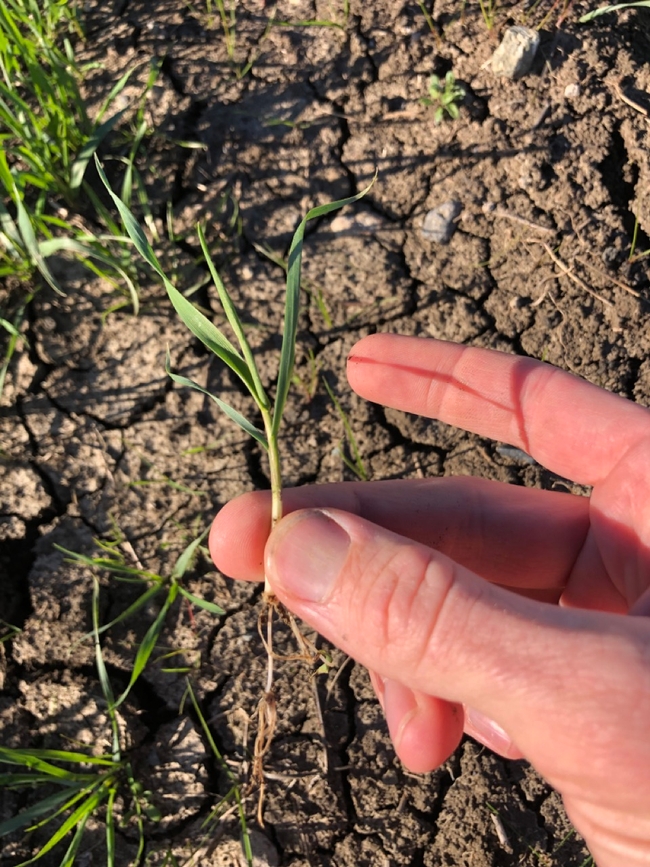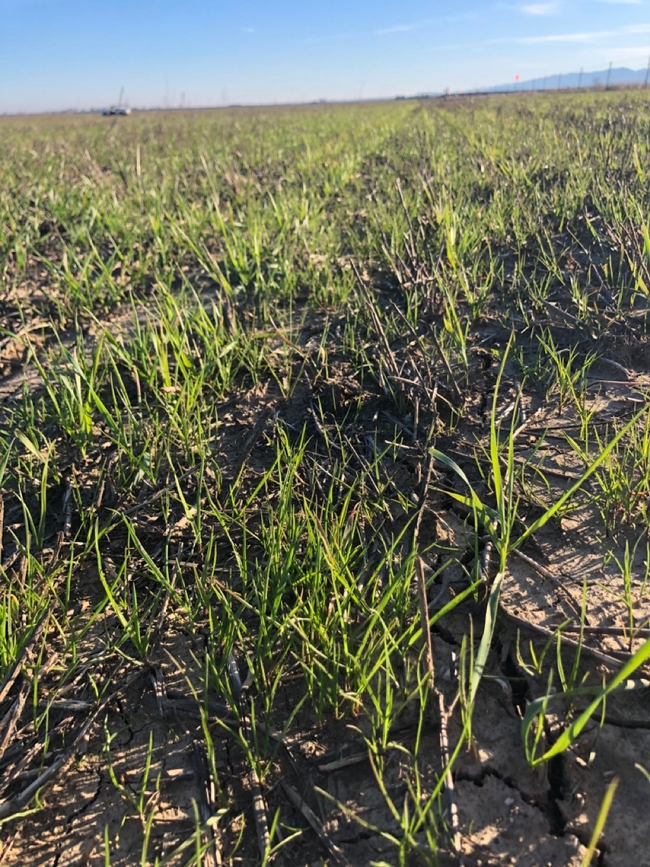The heavy rains have stopped a lot of growers from getting into their wheat fields, and growers may be wondering what the best move is given the break in the weather. Our forecast for rain in the next 10 days looks spotty, and that has some implications for both nitrogen and herbicide management in small grains.
Nitrogen (N) management.

- Granular fertilizers such as urea or ammonium sulfate need some rain to fall after they are applied in order to be successfully integrated into the soil. A general rule of thumb is that 0.25 inches or greater in the same storm will be sufficient to dissolve the fertilizer and get it into the soil profile. Timing applications ahead of a storm or irrigation event is advisable. If the weather dries up and no new storms materialize, N applied now may not become available to the plant in the near-term. N needs water to be utilized by the plant.
- Much of the wheat in the southern Sacramento valley is still in the early tillering phase (Feekes scale: 1-3). This means that nitrogen uptake has been pretty limited so far this season (around 1-2% of the total for the season). In other words, there's a long way to go.
With these things in mind, growers should continue monitoring the weather closely. Waiting a few more days is a given in most cases anyway as a lot of the acreage is still too wet to drive on. Now would be a good time for some soil nitrate quick tests, which can give growers and idea of the current N status in their soil. If we see another large storm system coming through in early to mid-February, growers will want to consider a top dress, but for now, depending on your crop's maturity, it might be prudent to watch the weather, monitor the crop, and wait until we know more.
The Nitrogen Fertilizer Management Webtool for California Wheat can help growers track their crop growth status over time and will chart N-uptake curves. If you have an N-rich reference zone, small seedlings may not yet be old enough for the model to produce a recommendation because the amount of N taken up by the crop at this stage is so minimal relative to the seasonal demand (Feekes 2-3). If crops are slightly more mature (Feekes 4-5), the N-rich reference zones may provide additional information to inform grower decision-making. By early- to mid-February, most of the acreage in the southern Sacramento Valley should be mature enough to provide data that can be used in the webtool.
Herbicide Considerations:
Italian ryegrass / weeds in general: So far I've seen chickweed in the valleys and Italian ryegrass in the hills, mostly at an appropriate stage for herbicide treatment depending on whether or not your wheat is mature enough. With good soil moisture, warming conditions, and lengthening days, weed growth is accelerating. Pay attention to the labels, but most of the ALS inhibitors (Osprey and Simplicity) and ACCase inhibitors (Axial) labels suggest spraying when weeds are between 2 leaves and two tillers. Some of those herbicide programs have slightly wider windows, but experience from a look-on-the-bright-side herbicide trial last year highlighted three lessons:
1. Spraying herbicides on drought-stressed weeds reduces efficacy, sometimes catastrophically. The same is true of weeds that have matured beyond the ideal growth stage.
2. Treatment windows on the labels are relatively optimistic about efficacy: yes, you CAN spray Italian ryegrass at three tillers in some cases, but herbicide performance on the early or late end of that window may be less dependable, especially under less-than-ideal conditions.
3. Weeds will out-compete your small grains if given the chance: every day that weeds are in there is a day that the crop is going to get edged out. Weeds grow faster and are more competitive and have the ability to completely overtake the crop in the course of a few warm weeks. Even if you manage to wipe out Italian ryegrass, if it's too late in the season, your crop's yield potential will have dropped substantially because so much of its key growth stages were spent competing with weeds for resources.

In terms of Nitrogen management, however, now might be a time to watch and wait until we have a bit more certainty about the weather. Growers will ultimately need to make the call on how to respond but having more information from soil nitrate quick tests and knowing what growth stage your crop is in will help inform those decisions.